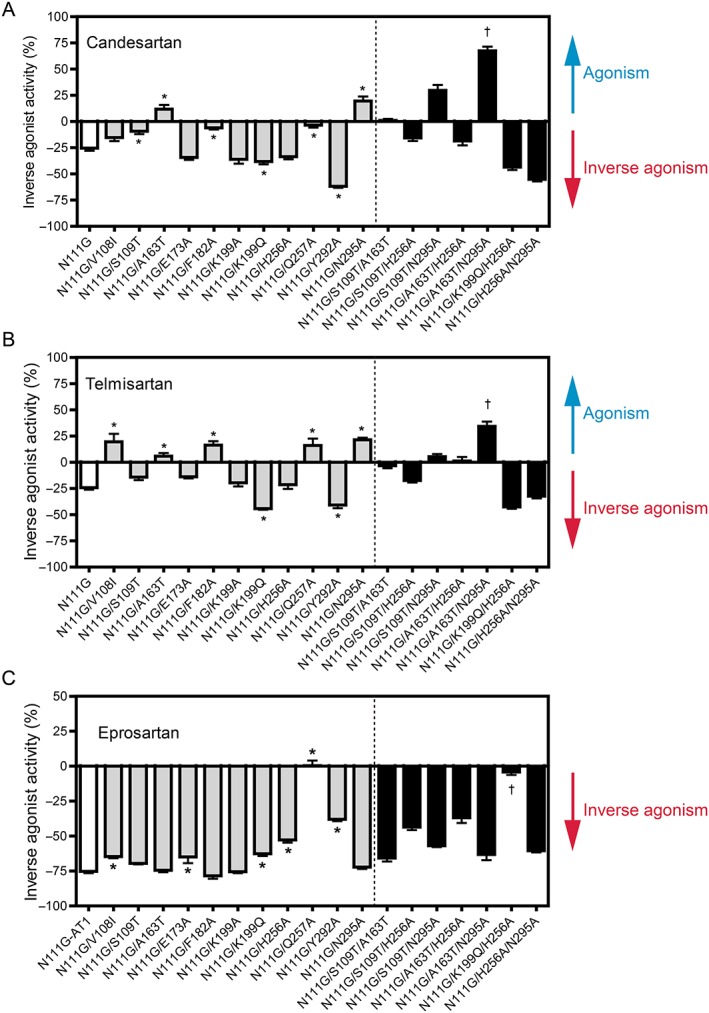Figure 4.

Effects of N111G‐ AT1 receptor mutants on the activities of candesartan, telmisartan and eprosartan. The activities (inverse agonism or activity switch from inverse agonism towards agonism) of (A) candesartan, (B) telmisartan and (C) eprosartan at a concentration of 10 μM for each ARB in COS‐1 cells transfected with N111G‐ AT1 receptors, single mutants in N111G‐ AT1 receptors and double mutants in N111G‐ AT1 receptors are shown. Double mutants were constructed by making two additional independent mutations in N111G‐AT1 receptors that significantly attenuated the inverse agonist activity or switched activity from inverse agonism towards agonism. The agonist and inverse agonist activities are expressed as a percentage of the constitutive activity of vehicle‐treated cells expressing N111G‐ AT1 receptors and each N111G‐ AT1 receptor mutant. The constitutive activities of vehicle‐treated cells expressing N111G‐AT1 receptors and each N111G‐AT1 receptor mutant were defined as 0%. Data represent mean ± SEM of independent experiments [candesartan: n = 16 (N111G/K199Q, N111G/H256A and N111G/Q257A), n = 12 (N111G), n = 8 (N111G/V108I, N111G/A163T, N111G/E173A and N111G/K199Q/H256A) and n = 6 (all other mutants); telmisartan: n = 12 (N111G), n = 8 (N111G/K199Q, N111G/H256A, N111G/Q257A, N111G/S109T/A163T and N111G/A163T/N295A) and n = 6 (all other mutants); and eprosartan: n = 10 (N111G), n = 8 (N111G/K199Q, N111G/H256A, N111G/Q257A, N111G/S109T/A163T and N111G/A163T/N295A) and n = 6 (all other mutants)]. Group sizes are not equal in Figure 4. The reason for this is that data of some groups showed large SEM when n is 6 per group, and we had to examine additional experiments to confirm exact value for these groups. * P < 0.05, significantly different from N111G‐ AT1 receptors; †, additive effect; one‐way ANOVA followed by Bonferroni's or Dunnett's post hoc tests.
